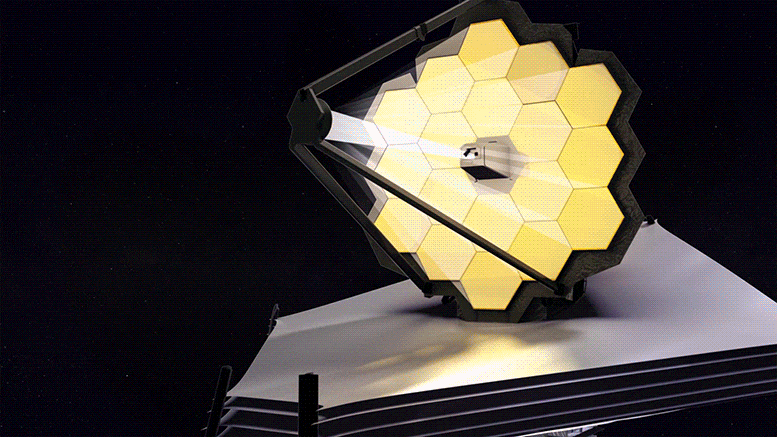
Over 100 researchers from around the world have collaborated to bring together observations of nearby spiral galaxies taken with the world’s most powerful radio, visible, and ultraviolet telescopes – and will soon add a full suite of high-resolution infrared images from NASA’s James Webb Space Telescope.
With this groundbreaking data set, astronomers will be able to study stars as they start to form within dark, dusty gas clouds, untangle when those infant stars blow away that gas and dust, and identify more mature stars that are puffing off layers of gas and dust – all for the first time in a diverse set of spiral galaxies.
High-resolution infrared images from the Webb Space Telescope will help researchers identify where stars are forming behind dust and study the earliest stages of star formation in this galaxy.
How do stars and star clusters form.
Within the first year of operations, NASA’s James Webb Space Telescope will help researchers complete a more detailed sketch of the stellar life cycle with high-resolution infrared-light images of 19 galaxies?
“Webb will reveal star formation at its very earliest stages, right when gas collapses to form stars and heats up the surrounding dust.”.
Not only to unravel the mysteries of star formation with Webb’s high-resolution infrared images, but also to share the datasets with the entire astronomical community to accelerate discovery.
Once the Very Large Telescope’s Multi Unit Spectroscopic Explorer (MUSE) instrument, also in Chile, came online, they obtained data known as spectra to study later phases of star formation of 19 galaxies, particularly after star clusters have cleared nearby gas and dust.
The space-based Hubble Space Telescope has provided visible and ultraviolet light observations of 38 galaxies to add high-resolution images of individual stars and star clusters.
Radio light observed by the Atacama Large Millimeter/submillimeter Array (ALMA), represented in yellow, highlight the clouds of cold molecular gas that provide the raw material from which stars form.
Visible and ultraviolet light captured by the Hubble Space Telescope highlights dust lanes in gold and very young, hot stars in blue.
High-resolution infrared images from the Webb Space Telescope will help researchers identify where stars are forming behind dust and study the earliest stages of star formation in this galaxy.
The missing elements, which Webb will fill in, are largely in areas of the galaxies that are obscured by dust – regions where stars are actively beginning to form.“Webb gives us a way to look inside these ‘star factories’ to see the freshly assembled star clusters and measure their properties before they evolve.”.
“With Webb, we’ll trace the evolutionary sequence of each galaxy’s stars and star clusters.”?
We want to measure when these stars free themselves from their gas clouds to understand how star formation is disrupted.”.
They will provide inventories of different phases of the star-formation cycle, including regions of star formation, young stars, star clusters, and local dust properties!
This research will be conducted as part of Webb’s General Observer (GO) programs, which are competitively selected using a dual-anonymous review system, the same system that is used to allocate time on the Hubble Space Telescope.The James Webb Space Telescope is the world’s premier space science observatory.Webb is an international program led by NASA with its partners, ESA (European Space Agency) and the Canadian Space Agency.
Webb telescope n this article.
THE CELL could not have evolved.A partially evolved cell would quickly disintegrate under the effects of random forces of the environment, especially without the protection of a complete and fully functioning cell membrane.
A partially evolved cell cannot wait millions of years for chance to make it complete and living.
Furthermore, none of these sequential molecules, proteins, DNA, RNA, can function outside of a complete and living cell and all are mutually dependent on one another.
The cell could not have evolved.A partially evolved cell would quickly disintegrate under the effects of random forces of the environment, especially without the protection of a complete and fully functioning cell membrane.
A partially evolved cell cannot wait millions of years for chance to make it complete and living.
Of course, once there is a complete and living cell then the code and mechanisms exist to direct the formation of more cellsWhat they’ve done is, by using intelligent design and sophisticated technology, scientists built DNA code from scratch and then they implanted that man-made DNA into an already existing living cell and alter that cell